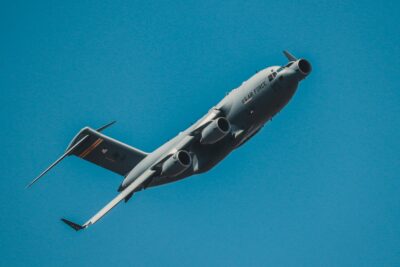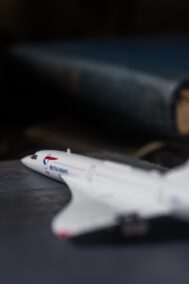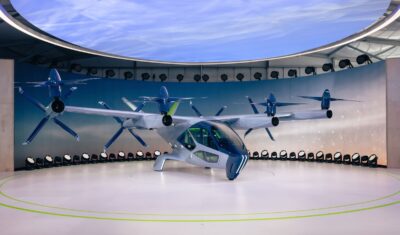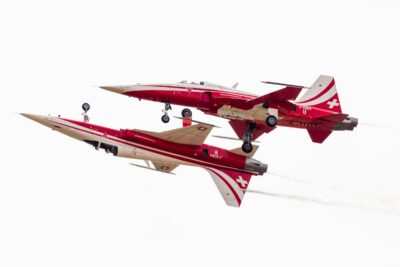Nanocomposites: A Game Changer in High-Performance Aircraft Design
Introduction to Nanocomposites in Aircraft Design
The development of nanocomposites offers even greater strength and stiffness properties, opening up new possibilities for lightweight and high-performance aircraft design. As the aerospace industry evolves, the demand for materials that are both lightweight and exceptionally strong is paramount. This need is driving significant advancements in nanocomposite technology, which combines nanomaterials with traditional composites to create materials with superior mechanical properties.
In Saudi Arabia and the UAE, where innovation in aviation is a key strategic goal, the integration of nanocomposites is seen as a crucial step towards achieving cutting-edge performance in aerospace applications. These countries are heavily investing in research and development to harness the potential of nanocomposites, aiming to not only enhance the capabilities of their domestic aviation industries but also to position themselves as leaders in global aerospace technology.
By leveraging nanocomposites, aircraft manufacturers can produce components that are not only lighter but also stronger and more durable. This innovation can lead to significant improvements in fuel efficiency, load capacity, and overall aircraft performance, aligning with the broader goals of sustainability and operational efficiency in the aerospace sector.
Benefits of Nanocomposites in Aviation
Nanocomposites offer a myriad of benefits that are particularly advantageous for the aviation industry. One of the most significant advantages is the reduction in weight without compromising structural integrity. Traditional materials used in aircraft manufacturing, such as aluminum and titanium, provide the necessary strength but contribute significantly to the overall weight of the aircraft. Nanocomposites, on the other hand, can achieve similar or greater strength while significantly reducing weight.
In addition to weight reduction, nanocomposites enhance the durability and longevity of aircraft components. The incorporation of nanoparticles such as carbon nanotubes and graphene into composite materials results in exceptional resistance to wear and tear, corrosion, and extreme environmental conditions. This leads to longer service life for aircraft components and reduced maintenance costs, which are critical factors in the highly competitive aviation industry.
Moreover, the use of nanocomposites aligns with the industry’s shift towards more environmentally friendly practices. The improved fuel efficiency achieved through weight reduction directly contributes to lower carbon emissions, supporting global sustainability initiatives. In the context of Saudi Arabia’s Vision 2030 and the UAE’s focus on innovation and sustainability, the adoption of nanocomposites in aircraft design represents a strategic move towards achieving these national goals.
Applications and Future Prospects
The applications of nanocomposites in aircraft design are vast and varied. From fuselage panels and wings to interior components and engine parts, the integration of nanocomposites is revolutionizing multiple aspects of aircraft manufacturing. For instance, the use of nanocomposites in the construction of wings can result in a significant reduction in weight, enhancing lift and maneuverability while maintaining structural integrity.
Looking towards the future, the continuous development of nanocomposite technology promises even greater advancements in aircraft performance and design. Research is ongoing to further enhance the properties of nanocomposites, exploring new combinations of nanomaterials and resin matrices to achieve unprecedented levels of strength, stiffness, and durability. As these materials become more widely adopted, we can expect to see even more innovative applications in both commercial and military aviation sectors.
In the Middle East, particularly in hubs like Riyadh and Dubai, the aerospace industry is poised to benefit immensely from these technological advancements. With substantial investments in research and development, these cities are becoming key players in the global aerospace market, leveraging cutting-edge technologies like nanocomposites to drive growth and innovation. The commitment to adopting advanced materials in aircraft design reflects the broader economic strategies of Saudi Arabia and the UAE, aiming to diversify their economies and reduce reliance on oil revenues.
Strategic Implications for Business and Leadership
For business executives and mid-level managers in the aerospace sector, understanding the strategic implications of nanocomposite technology is crucial. The adoption of nanocomposites not only enhances the technical performance of aircraft but also offers significant economic advantages. Reduced weight leads to lower fuel consumption and operating costs, providing a competitive edge in an industry where efficiency and cost-effectiveness are paramount.
Leadership in the adoption and integration of nanocomposite technology also positions companies as innovators in the market. By staying ahead of technological trends and investing in advanced materials, businesses can differentiate themselves from competitors and attract new opportunities. This proactive approach is essential for maintaining market relevance and achieving long-term success in the rapidly evolving aerospace industry.
Furthermore, the focus on sustainability and environmental impact is increasingly influencing business decisions. Companies that prioritize the use of environmentally friendly materials like nanocomposites can enhance their corporate social responsibility profiles, appeal to environmentally conscious consumers, and comply with stricter environmental regulations. This alignment with global sustainability goals is particularly relevant for businesses operating in regions like Saudi Arabia and the UAE, where there is a strong emphasis on sustainable development.
Project Management and Implementation
Implementing nanocomposite technology in aircraft design requires meticulous project management and strategic planning. From research and development to production and testing, each phase of the project must be carefully coordinated to ensure successful integration of nanocomposites into aircraft components. Effective project management practices are essential to navigate the complexities of developing and applying new materials, including managing costs, timelines, and resources.
Collaboration with research institutions, material scientists, and industry experts is vital to advance the development of nanocomposites. Engaging in partnerships and knowledge-sharing initiatives can accelerate innovation and drive the commercialization of these advanced materials. In the context of Saudi Arabia and the UAE, fostering such collaborations can enhance the domestic aerospace industry’s capabilities and contribute to the broader objectives of national development strategies.
Moreover, training and skill development are critical components of successful implementation. Engineers, technicians, and other personnel involved in the manufacturing process must be equipped with the knowledge and skills required to work with nanocomposites. Investing in education and training programs ensures that the workforce is prepared to handle the challenges and opportunities presented by this emerging technology.
Conclusion: Embracing the Future of Aerospace with Nanocomposites
In conclusion, the development and adoption of nanocomposites are transforming the landscape of aircraft design, offering unparalleled advantages in terms of strength, weight reduction, and durability. For Saudi Arabia and the UAE, this technological innovation aligns with their strategic goals of advancing their aerospace industries and achieving greater sustainability. By investing in nanocomposite technology, these countries are positioning themselves at the forefront of global aerospace innovation.
For business leaders and project managers, embracing nanocomposites represents not only a technical advancement but also a strategic opportunity to enhance competitiveness, drive growth, and contribute to environmental sustainability. As the aerospace industry continues to evolve, the integration of nanocomposites will undoubtedly play a pivotal role in shaping the future of aviation, leading to more efficient, high-performance aircraft and a more sustainable world.
—
#nanocomposites #aircraftdesign #aerospacetechnology #lightweightmaterials #highperformanceaircraft #SaudiArabia #UAE #moderntechnology #businesssuccess #sustainability























